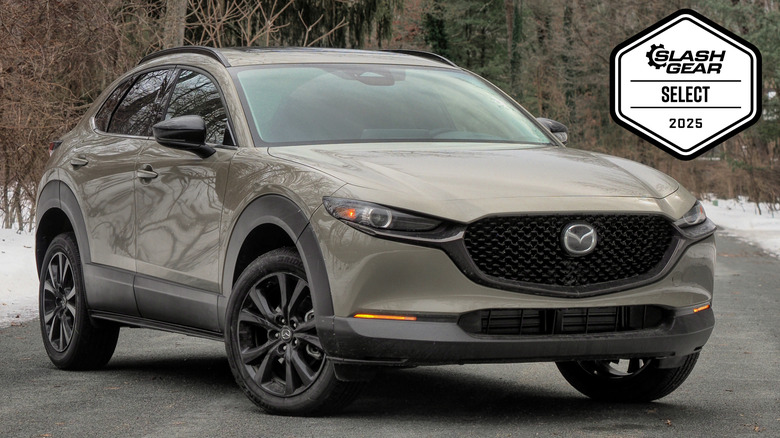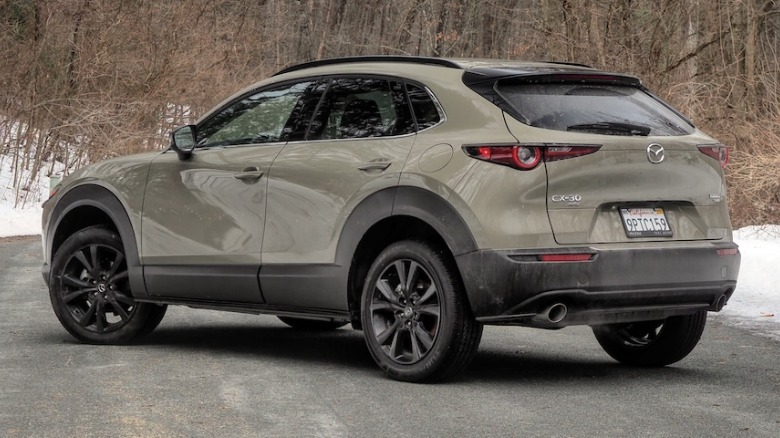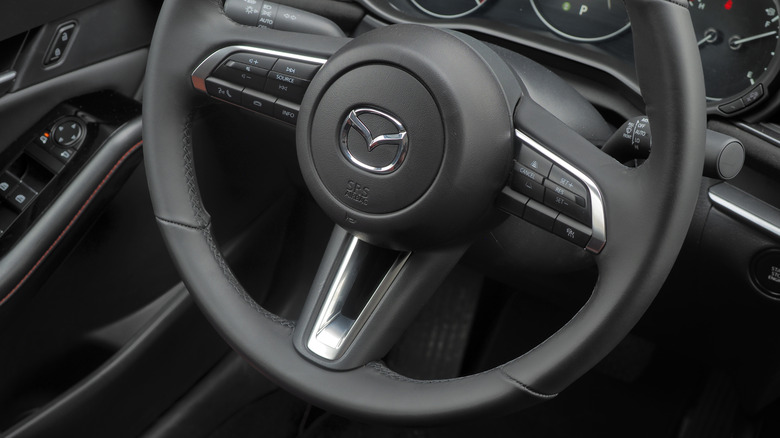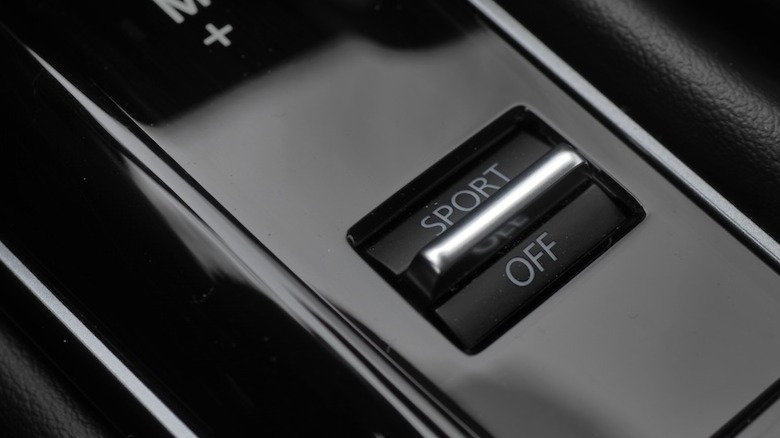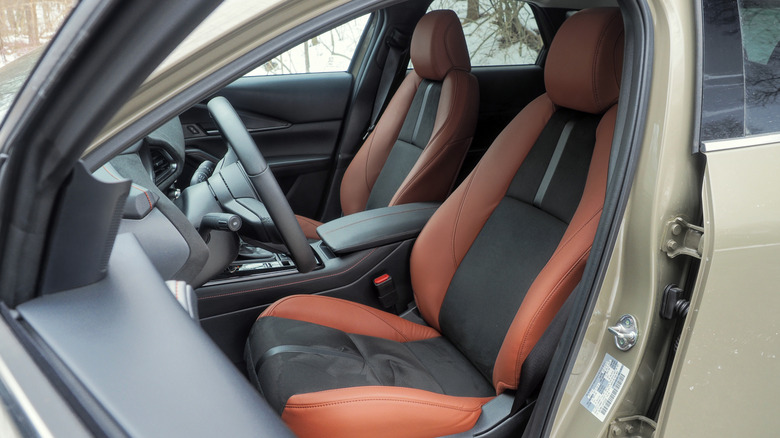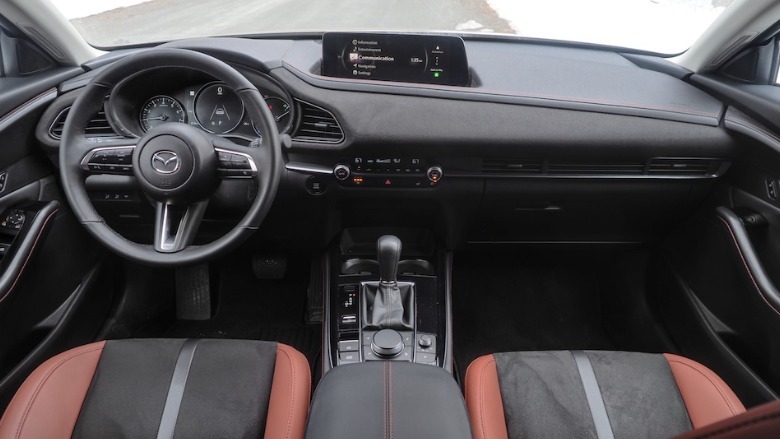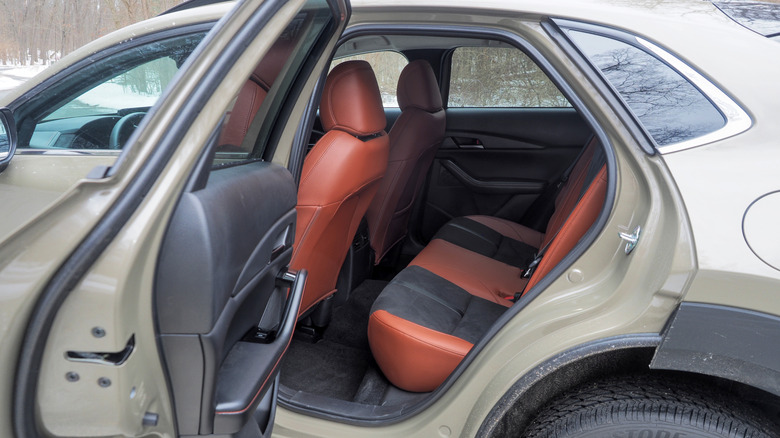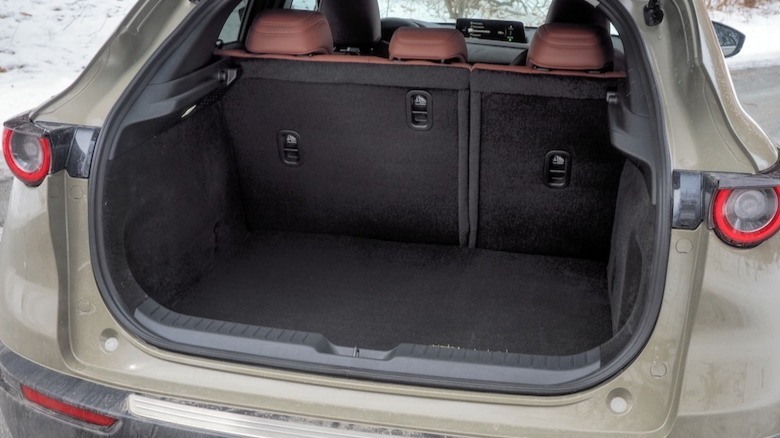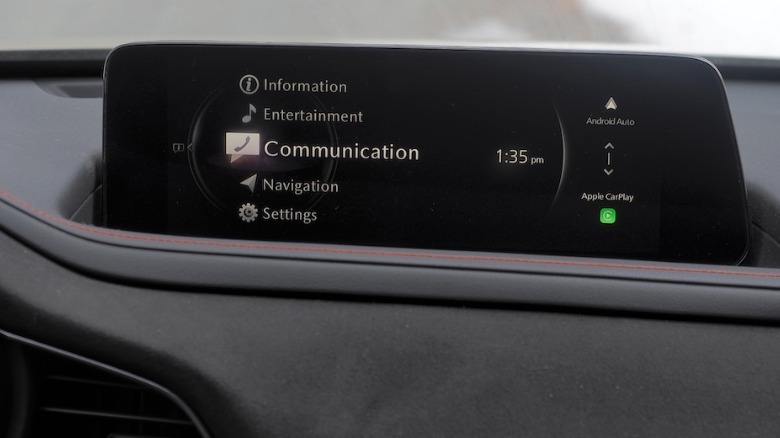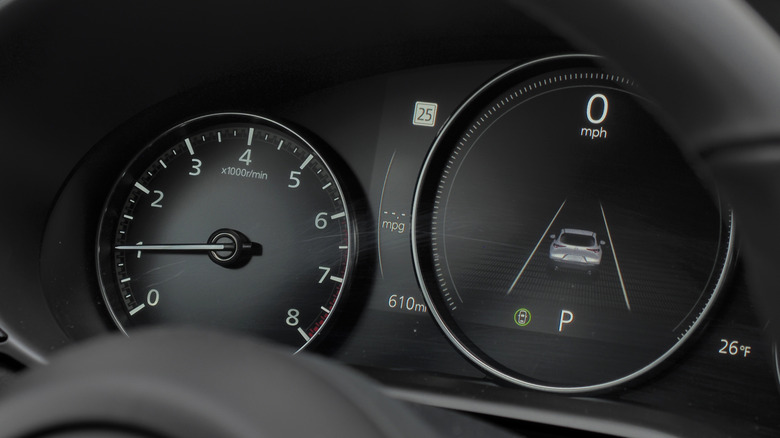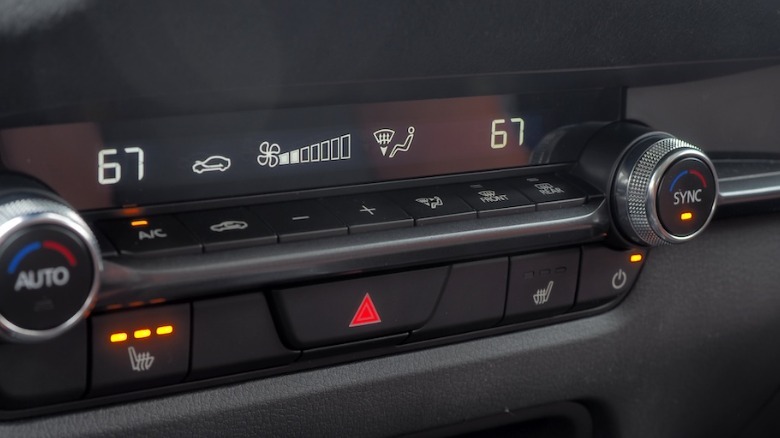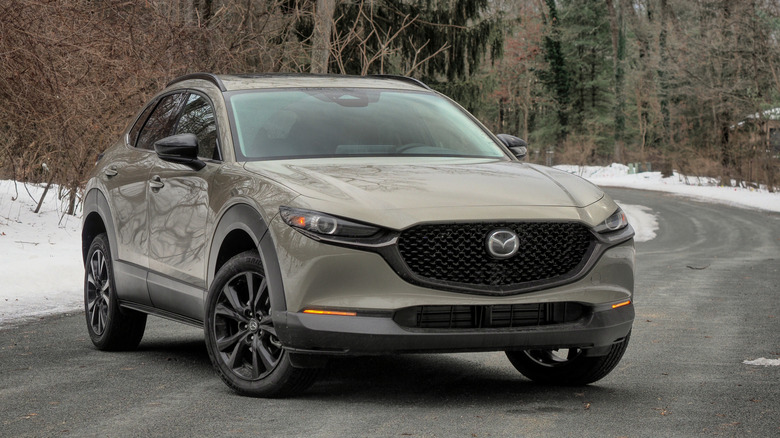2025 Mazda CX-30 Turbo Review: Crossover Fun Comes At A Cost
- Rewarding driving dynamics
- Looks great
- Solid level of standard equipment
- Turbo engine is a thirsty, expensive upgrade
- Less practical than rivals
Shoppers looking for a new subcompact crossover are spoiled for choice, and as always, being upfront about what's most important to you pays dividends. Is it price above all that sways your pocketbook, or do you want luxury features, a more capacious cabin than most, or a premium badge on the hood? Or — and this is where the 2025 Mazda CX-30 Turbo comes in — do you demand some behind-the-wheel whimsy along with your practicality?
Launched in 2019, the CX-30 first eclipsed the old CX-3 in size and capabilities, and then replaced it altogether. The smallest and cheapest SUV in the automaker's line-up, its $24,995 (plus $1,420 destination) starting price means it's not quite the most affordable point-of-entry for a new Mazda. The Mazda3 in sedan and hatchback flavors undercuts it, though there's no doubting that a crossover is an easier sell in today's market.
The fact that the CX-30 looks swell helps, too. Upright and chunky, with its black plastic cladding and restrained application of chrome brightwork, I'd argue it has better proportions than any other Mazda SUV (bar, maybe, the still classically elegant CX-5). All but the entry trim get 18-inch alloy wheels (the cheapest makes do with 16-inchers), and there's a decent 8-inches of ground clearance.
Two engines, but you know which one you want
Mazda's base engine is a naturally-aspirated 2.5-liter inline-four, with 191 horsepower and 186 lb-ft of torque. A six-speed automatic transmission is standard, along with all-wheel drive. It's not a bad engine, certainly, and it comfortably out-performs the base engines in Hyundai's Kona, Honda's HR-V, and Subaru's Crosstrek.
Still, it's hard not to look covetously at this CX-30 Turbo. The addition of forced induction coaxes out up to 250 horsepower and 310 lb-ft of torque, noticeable upgrades compared to the non-turbo version. It's not just "more" of each that helps, mind: the peak for both arrives sooner than with the cheaper engine, too.
The end result is engaging and fun, in a way we've come to expect from Mazda's cars. There's a Sport mode, though honestly you don't really need it to have a good time: the CX-30 Turbo leaps away from a standing start, all that torque landing at just 2,000 rpm so that the little crossover just keeps pulling.
Combine that with communicative and direct steering — which Mazda nails the weighting on — and suspension tuned just on the firm side, and it's perhaps no great surprise that the maker of the Miata can build a small SUV that still feels nimble on the backroads.
Well-equipped across the board
The Carbon trim is the most affordable version of the CX-30 Turbo, starting at $32,940 (plus destination). That said, by Mazda trim standards, it's higher than middle of the pack, so a decent amount of creature comforts are onboard. Terracotta upholstery — albeit leatherette, not real leather as on the more expensive Premium trim (from $35,140 plus destination) — brightens the cabin, and the swathes of soft-touch fabric on the dashboard are tactile and unusual. Dual-zone climate control with rear vents is standard, too.
The front seats are heated, but you'll need the Premium trim for a heated steering wheel as well. Mazda's 10.25-inch infotainment display is standard on the Turbo cars, up from 8.8-inches on the base engine models. Carbon trim doesn't get native navigation, though, but does have wireless Apple CarPlay and Android Auto, unlike the wired system with the cheapest trims.
It's a touchscreen, but Mazda really would rather you navigate via its knob in the center console. That includes when you're in smartphone projection mode, though you can at least go digging through the settings to overrule that specific aspect. The position of the screen does make it a bit of a reach, mind. Premium trims and above get a color head-up display, to go with the standard 7-inch gauge cluster screen that's sandwiched between analog dials.
Compromised practicality for that sleek exterior
For the most part, the CX-30's cabin is a pleasant place to be. The second row is tight on legroom, unsurprisingly, but the first row feels spacious. The moonroof — standard on all but the two cheapest trims — helps, there, plus it slides open. You'll be opening the tailgate manually, mind, since it's only power-assisted from the Premium trim up.
Either way, there's 20.2 cu-ft normally, expanding to 45.2 cu-ft with the 60/40 split rear bench folded down. They're low numbers, for the segment: a Honda HR-V offers 24.4 cu-ft expanding to 55.1 cu-ft; the Hyundai Kona is even more capacious, with 25.5 cu-ft expanding to 63.7 cu-ft.
At least all trims have a decent standard safety package. Blind-spot monitoring, lane-departure warnings and lane-keep assist, adaptive cruise control, and rear cross-traffic alerts are included on all versions of the CX-30. All trims get forward smart brake support, but only the flagship Turbo Premium Plus trim (from $36,950 plus destination) gets reverse and rear-cross brake support, and a 360-degree camera.
Thirsty good fun
There's no question that Mazda's turbo engine is the more fun option in the CX-30 line-up. The downside, unsurprisingly, is economy. It's already thirstier than the standard non-turbo, but then there's the fact that if you want that full 250 horsepower you'll need to be filling up with premium gas, too.
That's nothing new for Mazda's turbocharged drivetrains, but what is new is the presence of an electrified option for the larger CX-50. Dipping into Toyota's parts bin for its combination of a 2.5-liter gas engine and electric motors, the 2025 CX-50 Hybrid isn't quite as potent as the CX-30 Turbo — is has 219 horsepower — but the immediacy of electric torque gives it a noticeable kick in urban driving.
A plug-in hybrid CX-30 is probably too much to hope for, right now, and the demise of the little-loved MX-30 means full electric is probably off the table for a while, too. Mazda claims 22 mpg city, 30 mpg highway, and 25 mpg combined. My own, mixed driving landed at 22 mpg.
2025 Mazda CX-30 Turbo Verdict
The 2025 CX-30 Turbo isn't the cheapest crossover in its sprawling segment, then, nor the most practical, and definitely not the most frugal. That brings us neatly back around to the idea of knowing your own priorities: those who view their little SUV as a workhorse above all else will likely chafe at the idea of paying Mazda's premium.
More compelling, then, to see the CX-30 Turbo as a stylish compromise: an acknowledgement that, at some point, a Miata maybe isn't the daily-driver we can live with any more, yet without entirely giving up on fun in the process. Sure, you pay more in running costs, and the trunk isn't going to hold quite as much as a cheaper Kona, but the Mazda will prompt a smile in ways the Hyundai could only dream of.
While I'd love to see some electrification in the CX-30, the package as it is today has clear charm. Not for everyone, then, but that's hardly the point.
